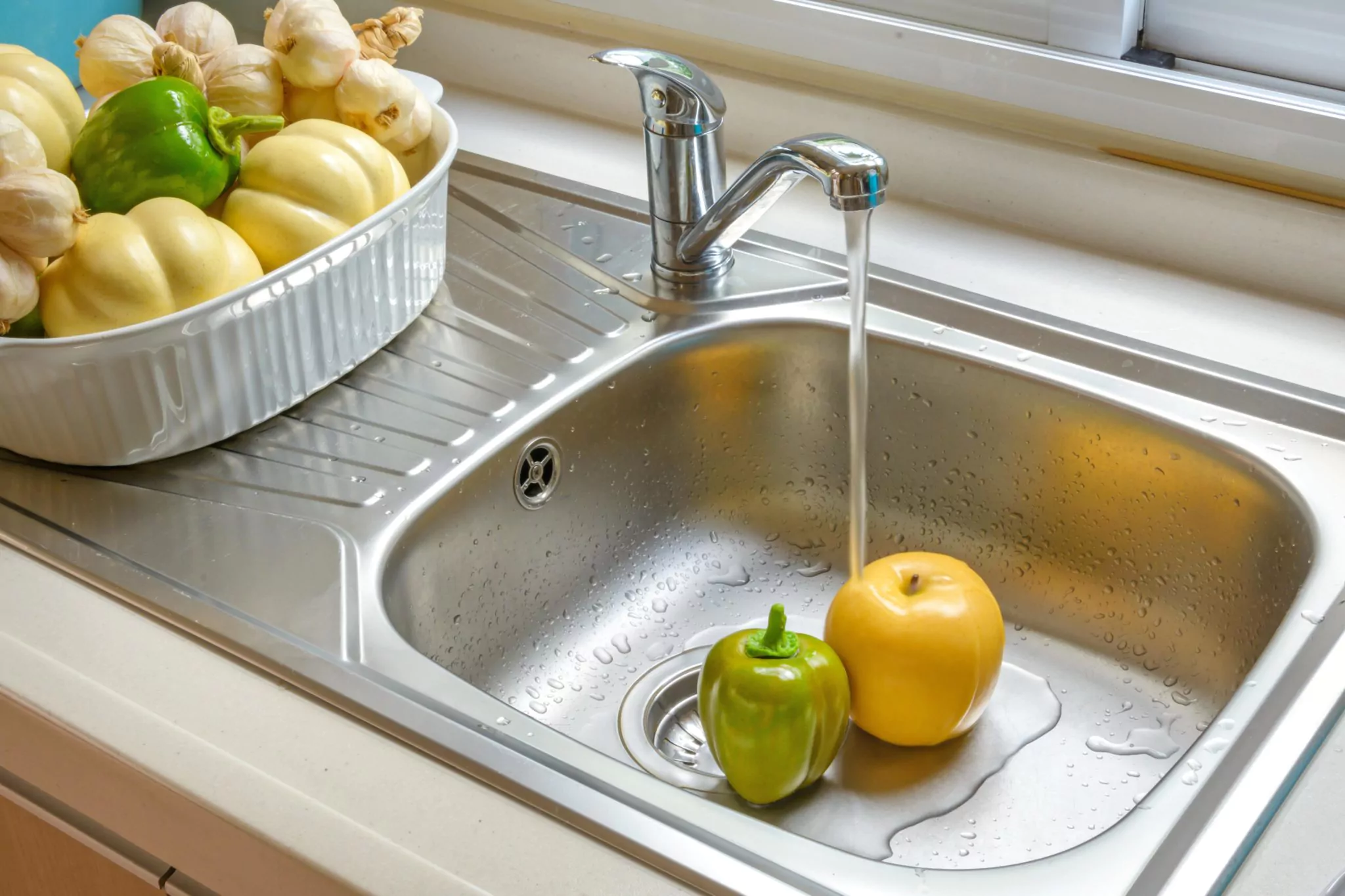The kitchen sink is more than just a functional element; it’s a centerpiece of the kitchen that marries form and function. Selecting the right kitchen sink involves considering various factors to ensure it complements your kitchen style, meets your daily needs, and withstands the test of time. This guide provides valuable insights to help you navigate the myriad options and choose the perfect kitchen sink for your home.
Stainless Steel: Sleek and Durable
Stainless steel sinks are a popular choice for their durability and timeless appeal. They are resistant to stains, heat, and corrosion, making them easy to clean and maintain. Look for sinks with a higher gauge for added sturdiness. Opt for brushed or satin finishes to minimize visible scratches.
Fireclay: Classic Elegance
Fireclay sinks exude a classic, farmhouse charm. Made from molded clay and fired at high temperatures, these sinks are resistant to scratches, stains, and fading. Their smooth, glossy surface is easy to clean, and they offer a distinctive, upscale aesthetic.
Granite Composite: Stylish and Durable
Granite composite sinks combine acrylic resins with crushed granite stone for a robust and stylish option. They are resistant to scratches, stains, and heat. The material’s natural appearance adds visual interest to the kitchen, and a variety of colors are available to suit different design schemes.
Cast Iron: Vintage Appeal
Cast iron sinks are coated with enamel, providing a smooth and glossy surface. Known for their vintage charm, these sinks are durable and resistant to scratches. They are available in various colors, allowing you to match them with your kitchen’s color palette.
Single-Bowl Sinks: Simplicity and Versatility
Single-bowl sinks are a classic choice, offering a simple and versatile design. They are ideal for smaller kitchens or those with limited counter space. The uninterrupted basin provides ample room for large pots and pans.
Double-Bowl Sinks: Enhanced Functionality
Double-bowl sinks feature two separate basins, providing enhanced functionality. You can use one side for washing dishes and the other for rinsing or food preparation. Opt for equal-sized bowls or consider asymmetrical configurations based on your specific needs.
Apron-Front Sinks: Farmhouse Charm
Apron-front sinks, also known as farmhouse sinks, have a distinctive exposed front panel. This design adds a touch of rustic charm to the kitchen and works well with various decor styles. They are available in different materials and configurations, allowing for customization.
Undermount Sinks: Seamless Integration
Undermount sinks are installed beneath the countertop for a seamless and clean look. They are easy to clean, as there’s no lip or rim to trap debris. This style works well with various countertop materials and provides a contemporary aesthetic.
Size Matters: Matching Your Kitchen’s Needs
Consider the size of the sink in relation to your kitchen’s dimensions and your daily activities. Larger sinks are ideal for households that do a lot of cooking and dishwashing. However, smaller sinks may be more suitable for compact kitchens or areas with limited counter space.
Depth for Versatility
The depth of the sink is a crucial factor. Deeper sinks offer more space for accommodating large pots and pans, minimizing splashing. However, shallower sinks may be more ergonomic and accessible, especially for shorter individuals or those with specific mobility considerations.
Top-Mount (Drop-In) Sinks: Easy Installation
Top-mount sinks, also known as drop-in sinks, have a visible rim that sits on the countertop. They are easy to install and replace, making them a practical choice for various kitchen configurations. The visible rim can also serve as a design element.
Undermount Sinks: Sleek and Seamless
Undermount sinks are mounted beneath the countertop, providing a sleek and seamless appearance. This installation option is popular in modern kitchens for its clean lines and easy-to-clean design. Keep in mind that professional installation is often recommended for undermount sinks.
Apron-Front Sinks: Statement Piece
Apron-front sinks have a unique installation that involves the front panel being exposed. This creates a statement piece in the kitchen, adding character and charm. The installation process may require custom cabinetry to accommodate the sink’s design.
Faucet Mounting Holes
Consider the number of faucet mounting holes needed based on your faucet choice. Some sinks come with pre-drilled holes for faucets and accessories like soap dispensers or sprayers. Ensure that the sink’s hole configuration aligns with your preferred faucet style and additional accessories.
Faucet Height and Reach
The height and reach of your kitchen faucet should complement the sink. A high-arc faucet can accommodate large pots and pans, while a pull-down or pull-out design adds convenience for tasks like rinsing vegetables.
Ease of Cleaning
Consider the ease of cleaning when choosing a sink. Smooth, non-porous surfaces are generally easier to clean and maintain. Stainless steel, for example, is known for its resistance to stains and can be easily wiped clean. Fireclay and granite composite sinks also offer easy cleaning with their smooth surfaces.
Resistance to Stains and Scratches
Opt for a sink material that is resistant to stains and scratches to maintain its aesthetic appeal over time. Stainless steel and granite composite are known for their durability and resistance to common kitchen mishaps.
Balancing Quality and Budget
Establishing a budget is a crucial step in the decision-making process. While quality is important for a long-lasting sink, there are various materials and styles available to suit different budgets. Consider your priorities and find a balance between quality and affordability.
Total Cost of Installation
Factor in the total cost of installation, including any additional plumbing or cabinetry modifications required. Certain sink styles, such as apron-front sinks, may necessitate adjustments to accommodate their unique installation, affecting the overall cost.
Conclusion
Choosing the right kitchen sink involves a thoughtful consideration of various factors, from material and style to size and installation options. By understanding your kitchen’s needs, considering your design preferences, and aligning your choices with your budget, you can select a kitchen sink that not only enhances the functionality of your space but also adds a touch of style to the heart of your home.

